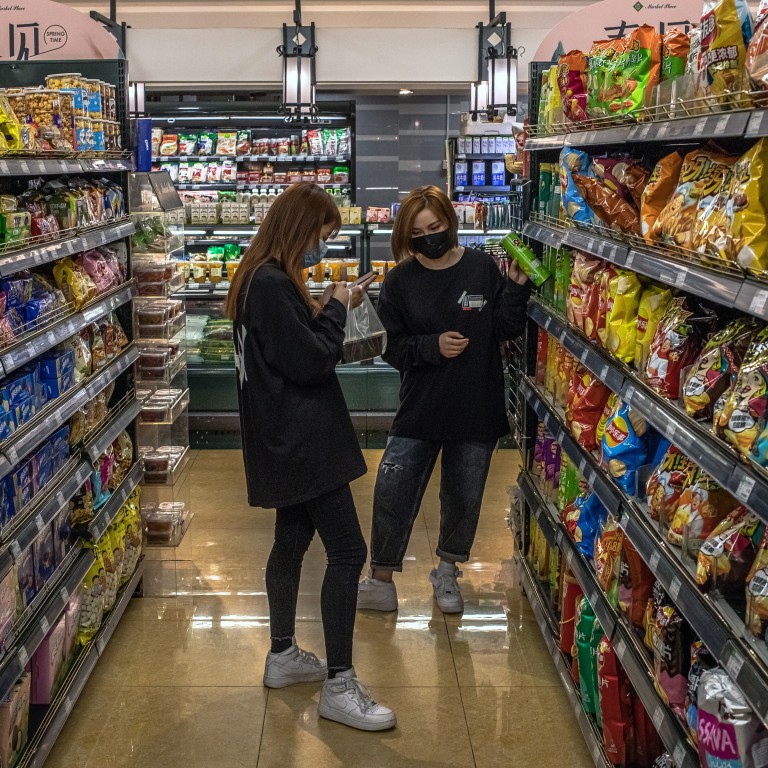
Coronavirus: China’s factory prices hit four-year low as pressure continues to mount on manufacturers
- China’s producer price index fell to minus 3.1 per cent in April, the lowest point since minus 3.4 per cent in April 2016
- Consumer inflation continued to fall, with the consumer price index 3.3 per cent in April
China’s manufacturers continued to suffer from the fallout of the coronavirus pandemic, with factory gate prices plunging further in April.
The producer price index (PPI), reflecting the prices that factories charge wholesalers for their products, fell to minus 3.1 per cent year-on-year last month, according to a National Bureau of Statistics (NBS) release on Tuesday.
It marked the worst decline since minus 3.4 per cent in April 2016, and suggests that with pressure mounting on the domestic and international economies, China’s manufacturers are unable to charge the price they would like for their products.
China’s consumer price index (CPI), meanwhile, rose by 3.3 per cent from a year earlier, decelerating from a 4.3 per cent gain in March, the NBS said. Analysts polled by Bloomberg had expected an inflation rate of 3.7 per cent.
This was the lowest monthly inflation rate in China since 3.8 per cent in October 2019.
Consumer prices have, in recent months, been coming off a long upwards trend, sent soaring by rising pork prices, due to China’s African swine fever outbreak.
Consumer and producer price inflation fell sharply last month, reflecting the continued weakness in demand
April’s inflation numbers show that pork prices rose 96.9 per cent year-on-year last month, easing slightly from a rise of 116.4 per cent in March and a record high of 135.2 in February. Overall food prices rose 14.8 per cent compared to last year.
“Consumer and producer price inflation fell sharply last month, reflecting the continued weakness in demand,” said Julian Evans-Pritchard, senior China Economist at Capital Economics.
“0.7 percentage points of the decline was the result of a drop in food price inflation. This partly reflects a stronger base for comparison but food prices also fell 3 per cent month-on-month. The fall in pork prices, by 7.6 per cent month-on-month, was especially pronounced and suggests that supply disruptions caused by African swine fever are easing. Core inflation, which excludes food and energy prices, inched down marginally.
The fall in PPI, meanwhile, was driven by a 11.6 per cent contraction in prices charged for excavation equipment, with raw materials dropping 8.8 per cent.
“This is consistent with broader evidence that demand remains very weak and is recovering more slowly than output. The decline was driven by lower prices of raw materials and manufactured goods. The weakness in PPI – which correlates with industrial profits – suggest that financial strains on industrial firms probably did not ease much in April,” added Evans-Pritchard.
“What’s more, food and energy price inflation should continue to fall in the months ahead and pull headline inflation down further. That should remove any concerns the PBOC has about the impact of monetary easing on inflation. If anything, lower inflation will increase real interest rates and strengthen the case for further rate cuts.”

